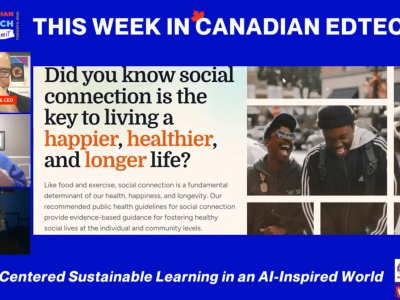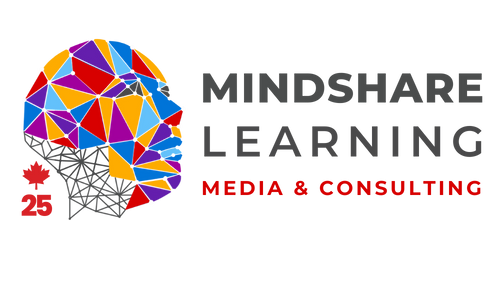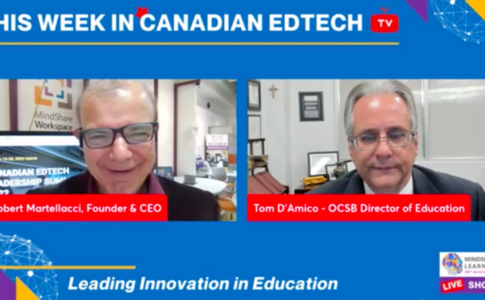No doubt you’ve heard of the now oft-quoted OECD study entitled, Students, Computers and Learning: Making the Connections (2015). And no doubt, probably before you’ve taken the time to read the full report, you’ve developed an opinion based on your investment, or lack thereof, in using technology in your classroom, school or district. Moreover, your current method of teaching, or your pre-ordained understanding of what ‘good pedagogy’ looks like and how it is constructed will also have an impact on how you ‘read’ this report. In short, the main stream press has mostly highlighted the negative aspects of technology in education. And there are some negatives, to be sure. It is however always with some grain of salt that we should read these ‘headlines’ before actually sitting down and reading the report itself. That would be what an educated person would do. I’m not going to highlight the approach taken by the research, or the time period, or the areas of focus, as problematic as some of it is, but I will cull from the information the salient points.
To be honest, I accept this report with a renewed optimism for the use of technology in education. It finally puts to rest the notion that a great deal of hardware and software will make a difference regardless of the arbiter of such. Or that somehow technology is a panacea to all of our educational problems. I would assume that a great many people already know that. And it re-emphasizes the need for educational systems to realize that there is a serious need for developing sound and cogent professional development systems that work with the technology, and ensure that there are clear ways that ensure that students can build deep, conceptual understanding and higher-order thinking skills. To be clear, we’re just not there yet. There are far too many system issues that impact the delivery of the above consistently. System issues range from a lack of coherent vision in developing sound pedagogical principles when using technology in teaching and learning, to hardware and software infrastructures that are not sustained, or maintained enough to truly sustain a coherent vision, if there was one. There are also issues of leadership, both local and system wide. Leaders who know little but purport to know much, and a fear of the future so the status quo is the best place to rest. No, that’s not leadership. Regardless, there are some findings, both obvious and subtle, that we can draw some ‘next steps’ from and move forward.
As the report states, there are many unanswered questions and the findings should not lead to despair. Let me outline five key points that we should take away from this report. These five key points have been said before in so many different ways; the issue is whether we will act on what we’ve identified to be problems, or whether we will continue to listen to the purveyors of technology for the sake of technology itself, and not what needs to happen now.
1. We need a comprehensive, well-designed and cogent strategy to develop and sustain teacher capacity in the use of new pedagogies in technology.
Teachers will not change their practices because you’ve given them technology. They will change their practices when they see the technology make a consistent difference with minimal obstruction of the actual practice. In other words, it must work consistently, fluidly, and powerfully. They will also change their practice when they have consistent, clear and dedicated support at the school level. There will always be the ‘pathfinders’ and the ‘tech-warriors’ and ‘rock stars’, but what we need is a strategy that meets the needs of mainstream teachers, much the same way teachers are expected to meet the needs of their students.
Also, we need to develop comprehensive teams at both the system and school level that focus on asking the tough questions about ‘what’s working’ and ‘what’s not working’ with regards to pedagogy infused with technology. These questions should inform our approaches, and they should be documented so that they can be shared across districts, and beyond. Are you aware of a plan at your school or district to inform pedagogy using technology? If you are aware of one, has it been reduced to actionable items? Are you encouraged to take risks in your teaching using technology? Do you have partners and collaborators who will ‘stand in the gap’ with you? Do you have an administrator who stifles the use of technology to inform and deepen your pedagogy?
Moreover, we must ensure that our leaders have developed some capacity for understanding the new and innovative pedagogies that are being developed because of technology. Leaders at the school level and system level in this area are few and far between. Hence the preponderance of ‘issues’ with developing sound plans for infusing technology across the curriculum. If you don’t get it, you won’t do it. Enough said.
2. We should not assume that students know how to use technology properly. There is a definite need to prepare students at an earlier age how to use technology in contexts that increase and support collaborative practices, and to make every effort to train them to use the powers of technology to enhance their learning.
I’m guilty of this. It’s easy to believe that the students today have some innate understanding of technology. They’ve grown up with it, right? Well, not so fast. It seems that we must start from the beginning, and the earlier the age the better. In fact, we should be aware that students will even need to understand how to navigate an eReader, or to locate, read and evaluate information on the Web, or to fully navigate an online encyclopedia to do proper research. In order to fully realize the benefits of technology fundamentals skills in the use of technology must be taught. This will then allow students to access more easily and efficiently the resources available to them now, and in the future, especially given that more and more people will have to use the Internet to do research, assimilate the research and communicate it effectively.
3. We need to provide students with more opportunities to solve real-world problems using technology, especially problems that require collaboration and deep problem solving.
Using robotics in real-world challenges, or developing digital solutions for real-world challenges have tremendous impact on advanced reasoning and problem-solving. Since coding and robotics are being introduced to students are younger ages, I’m sure that if this study was conducted in another five years we would see some tremendous impact on developing collaborative and deep problem solving and reasoning skills. Not only do students enjoy these challenges, they love to feel the sense of accomplishment when designing a solution to a problem that exists in the real world.
4. We must ensure that we are making every effort to develop media and digital literate students.
The Internet is a vast repository of both good and bad. It provides easy access to information, and opens doors to finding the ‘easy answer’ or to using someone else’s work irrespective of copyright or plagiarism. It is our responsibility to ensure that our students are aware of copyright, plagiarism, identity theft, and any number of academic and socially inappropriate behaviour. We must develop critical thinkers and consumers of the resources found on the Internet. This should be intentional and consistent right across the curriculum.
Moreover, teachers themselves need to be the models of these literacies, but with teachers who are stuck in old paradigms, in siloed philosophies about what teaching and learning should look like in the 21st Century, there’s little wonder that we haven’t truly advanced in developing more media and digitally literate young people. This simply underscores my first point in this list.
5. You simply cannot replace an exceptional teacher with any form of technology. But you can further enhance the exceptional teachers impact by training him or her how to effectively integrate technology right across the curriculum, and this takes us back to point 1.)
It’s funny how we’ve come full circle here. We know that exceptionally caring, skilled, and gifted educators exist in our system. I see them every day. Committed teachers are the foundation of our system and teachers working together – professional capital as Fullan and Hargreaves would say – can move mountains. Think about teachers working together, leveraging the power of technology in the brave new world of real-world learning where every opportunity becomes a harbinger of something better. Think about students so engrossed with the nature of our world, and the power to make an impact small and large, bound by a need to seek justice, meet needs and solve problems, and to become world citizens, can ignite our learning contexts and educational systems and propel us further into a more complete world. Well, we need to ensure that our key ingredients for this kind of change – our teachers – are properly equipped. And this will take a plan. A big plan.









